French 18th-century tapestry is back. Following Aubusson’s ‘Aubusson Tapisseries des Lumières’ last year, the Mobilier national have put on a sumptuous display of tapestries from the period, made exclusively at the Gobelins workshops. Gobelins tapestry is famous for the masterpieces of the age of Louis XIV, but there was so much more than that. The entire 18th-century French school flourished in wool and the tapestries have long needed re-evaluation.
The late 17th and early 18th century was a patchy period at the Gobelins. Some very poor figurative sets such as the Metamorphosis after different painters (here represented by Louis de Boulogne’s Zephyr and Flora) were produced alongside some sublime ornamental hangings such as Claude III Audran’s Twelve Months in Grotesque Bands and the Portières of the Gods.
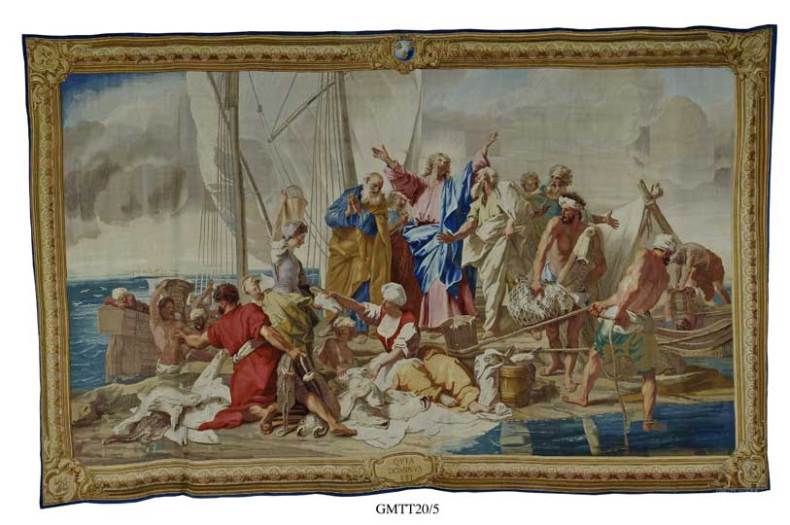
The Miraculous Fishes, after Jean Jouvenent from the New Testament, woven in the workshop of Pierre-François Cozette. Photo: Mobilier national. Photographer: Lawrence Perquis
After Charles Le Brun (1619–1690) there was a famine of good history painters working for the Gobelins, but then came Jean Jouvenet (1644–1717), striding into the picture like a saviour from one of his own paintings. His four paintings for the New Testament (two now in the Louvre, two in Lyons) are magnificent, and magnificently rendered in tapestry. His Miraculous Fishes, a classic subject, is truly a break with tradition: Jouvenet’s strong diagonals go beyond frieze-like composition. The movement of the figures is achieved without sacrificing statuesque solidity. You don’t know where to look – to the holy presence of Jesus, the beautiful and Raphael-esque woman with the bucket on her head, or at one of the wonderfully drawn cods.
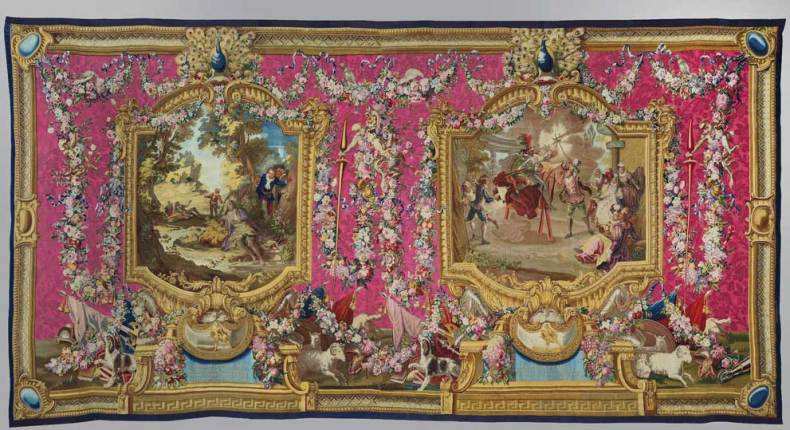
The Priest and Cardeno meet Dorothea and the Wooden Horse, after Charles Coypel, from Don Quixote, woven in the workshop of Jean Audran and Pierre-François Cozette Photo: Mobilier national. Photographer: Isabelle Bideau
Charles Coypel’s Don Quixote tapestries combine the best of the new French School, which followed Jouvenet, with the best of régence ornamentalism. Coypel is charming – the turn of the head of one of his figures can melt – and this and his verve and wit come together in the tapestries. This is ornamentalism of a different order – a point driven home by the exquisite cartoons for sofa backs for an extended Don Quixote furniture suite, painted by Coypel in collaboration with Claude Audran, Alexandre-François Desportes and Jean-Baptiste Blain de Fontany.

Model for the back of a sofa with Sleeping Cupid (c. 1720-1730), Charles Coypel with Claude Audran and Jean-Baptiste Blain de Fontenay. Photo: Mobilier national. Photographer: Isabelle Bideau
It was enlightening to see just how good the best French School painters were. Even average compositions such as Natoire’s Mark Antony set or Van Loo’s Theseus looked great as tapestries, and de Troy’s immensely popular Esther and Medea (modern scholars insist wrongly on calling it Jason) sets provide one of the high points of the French School association with Gobelins.
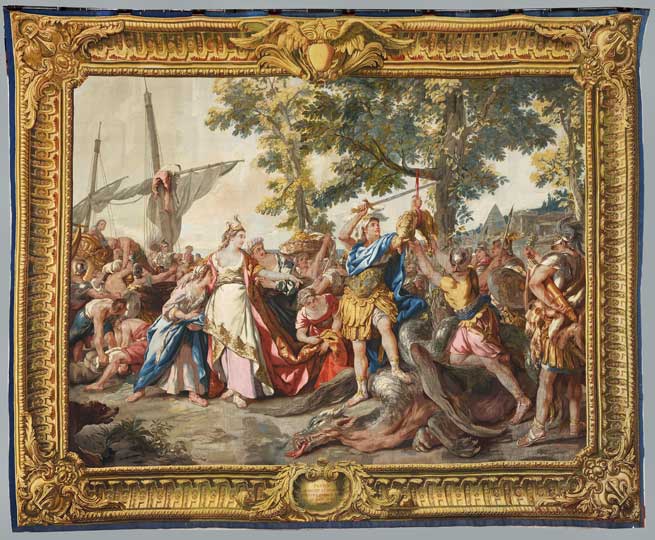
Jason Stealing the Golden Fleece and the Departure after Jean-François de Troy, from the Story of Medea (17847), woven in the workshop of Pierre-François Cozette. Photo: Mobilier national. Photographer: Isabelle Bideau
After 20 years experience at Beauvais, François Boucher was appointed head of the Gobelins in 1755. His Venus in the Forge of the Vulcan from the multi-authored Loves of the Gods set commissioned in the late 1750s shows him head and shoulders above his peers Pierre and Vien, although Pierre’s waterfall of infants playing with a dog in the so-called Allegory of Fidelity is quite lovely.
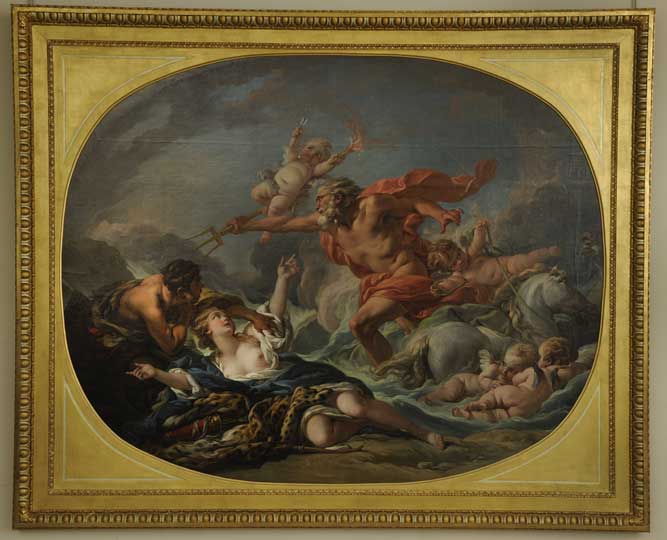
Neptune and Amymome (1764), François Boucher. Chateau de Versailles, on deposit to the Mobilier national. Photo: Mobilier national. Photographer: Isabelle Bideau
A central part of the exhibition was devoted to the ornamentalist Maurice Jacques who worked at the Gobelins from the late 1750s and was renowned for his alentours of the series of tapestries known as the Tentures de Boucher. It was highly instructive to see so many cartoons on display, although Jacques’ slightly metallic fronds and mechanical flowers never quite reach the heights of the ornamentalism found in Audran’s Months or Coypel’s Don Quixote. Similarly, the Tentures de Boucher, although developing a format inspired by Coypel’s Don Quixote, do not compare.
Boucher provided paintings of supreme quality for this series, here represented by the ovals Venus and Vulcan and Neptune and Amymone, which although outstanding late works simply become components in Jacques Neilson’s conception of ‘modular’ tapestry design which turned tapestry into trompe-l’oeil oval paintings on trompe-l’oeil silk wallpaper.
This is an excellent exhibition accompanied by an equally fine publication. Beauvais awaits.
‘The Gobelins in the Enlightenment: A golden age of the Royal Manufactory’ is at the Galerie des Gobelins, Paris from 8 April 2014–18 January 2015.



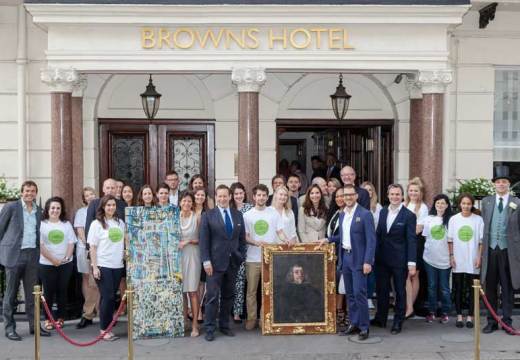
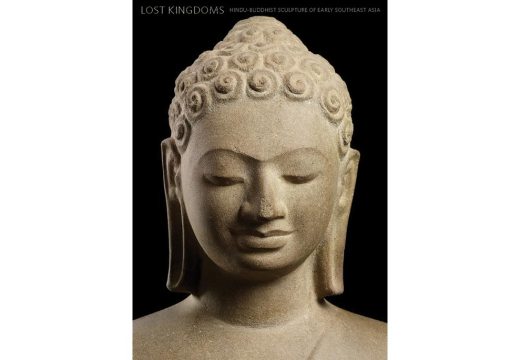
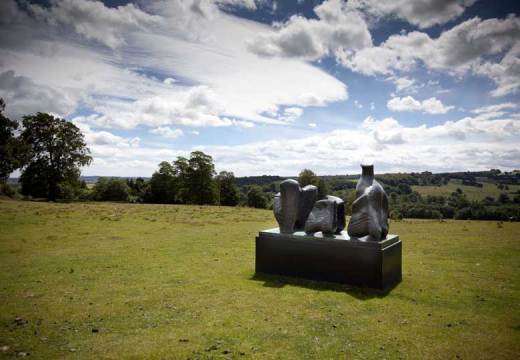









![Masterpiece [Re]discovery 2022. Photo: Ben Fisher Photography, courtesy of Masterpiece London](http://zephr.apollo-magazine.com/wp-content/uploads/2022/07/MPL2022_4263.jpg)
‘Like landscape, his objects seem to breathe’: Gordon Baldwin (1932–2025)